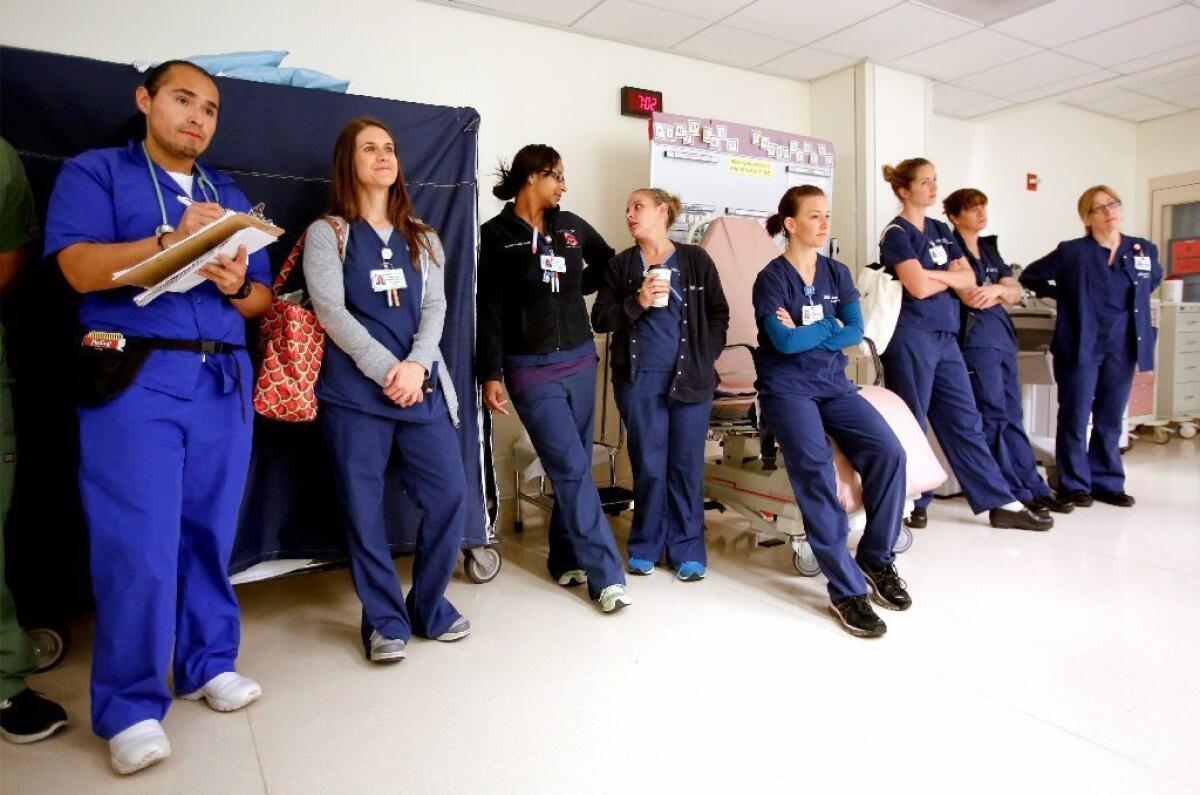California job growth is outpacing the nation’s

California’s job market powered ahead in July amid the longest expansion since the 1960s, and unemployment remained at a record low.
Since the post-recession turnaround in February 2010, the state has added 3.3 million jobs, accounting for more than 15% of the nation’s employment gains, state officials reported.
Last month’s tally of 19,600 new jobs was lower than June’s revised 41,300 number. But monthly payroll data are volatile. More significantly, California has added an average of 29,200 jobs a month over this 113-month expansion. Year over year, the state’s employment growth outpaced the nation’s, 1.8% to 1.5%.
California unemployment stood at 4.1% in July, tied with the record low of July 2018, and down a notch from the 4.2% level in June. U.S. joblessness stood at 3.7% in July.
However, forecasters were cautious in their interpretation of the trends.
“On balance, California’s economy remained healthy in July,” said economist Lynn Reaser of San Diego’s Point Loma Nazarene University. “But it remains vulnerable to uncertainties regarding trade, global growth, interest rates and stock markets.”
One concern: a contraction of the state’s labor force by 35,000 in July, the fifth consecutive monthly drop in the number of people working and looking for work.
Since peaking in February, the labor force has fallen to 19,387,100, a decrease of 195,811, and the longest decline since 1976, said economist Sung Won Sohn of Loyola Marymount University.
“The jobless rate hovering around 4.1% for months indicates full employment,” he added. “Without additional labor, job growth can’t maintain its pace.”
As it is nationally, the trade war with China is worrisome for California, economists said. The Trump administration has imposed tariffs on $250 billion in goods and is threatening billions more. The twin ports of Los Angeles and Long Beach handle more Asian imports and exports than any other region.
“On the one hand, the trade war has been going on for over a year, without derailing employment expansion,” said Michael Bernick, a former director of the state’s Employment Development Department who follows labor trends.
“But economic forecasts this week by Goldman Sachs and by Bank of America suggest the new tariffs might be the tipping point, as they have upgraded recession probabilities,” Bernick said. “Clearly California is vulnerable, with our considerable agriculture, trade, transportation and manufacturing sectors.”
Year over year, the largest sector adding jobs in California was education and health, with a boost of 82,800, powered by medical employment at a time when the state’s population is aging.
Other growing sectors were professional and business services (76,800), which includes some technology-related jobs, leisure and hospitality (40,900), construction (37,100), government (35,100), manufacturing (12,800) and information (15,100), which includes both technology and entertainment jobs.
Just one sector lost jobs over the year: mining and logging, down by 200.
Nonfarm payroll and employment data varied over the Southern California region.
Los Angeles County added 63,400 jobs year over year, a 1.4% increase. Unemployment stood at 4.5% in July, down from 4.6% a year earlier.
Orange County added 24,400 jobs over the year, a 1.5% increase. Unemployment was 3.2%, unchanged from July 2018.
The Inland Empire added 35,300 jobs, an increase of 2.4%. The unemployment rate was 4.8% in Riverside County and 4.5% in San Bernardino County.
California’s unemployment rate is derived from a federal survey of 5,100 households in the state. Its payroll jobs numbers come from a separate federal survey of 80,000 California businesses.
More to Read
Inside the business of entertainment
The Wide Shot brings you news, analysis and insights on everything from streaming wars to production — and what it all means for the future.
You may occasionally receive promotional content from the Los Angeles Times.











